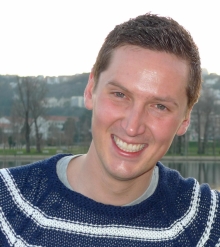Four decades of research have passed since the discovery of HIV-1, but to date there is no cure. Most infected individuals, if not given antiretroviral therapy (ART) will progress to AIDS within 10 years. With the introduction of ART the morbidity and mortality associated with HIV-1 infection have decreased, but eradication remains difficult due to the persistence of viral reservoirs in the infected individual.
Elite controllers are HIV-1-infected individuals who in the absence of ART are able to control viral replication. HLA-B*57 stands out as a major allele associated with lower viral loads in Caucasians. However, this host genetic trait only account for about 25% of the variance in HIV-1 viral load. It is also not well understood why some HLA-B*57 individuals progress at a more rapid rate compared to others who have the allele but are slow progressors. This suggests that additional anti-HIV-1 factors are at play in the control of viremia in individuals carrying protective HLA-B alleles. Recently, a number of intrinsic immune factors have been identified which are expressed in HIV-1 target cells and restrict retroviral infection in vitro. Emerging data suggest that these factors may be attractive targets for curative approaches.
Given these findings we hypothesize that HLA-B*57 HIV-1-infected individuals possess a better control of HIV-1 replication caused by the pre-existing overexpression of host restriction factors. This pre-mobilized defense against retroviral infection in HLA-B*57 individuals may be at the basis for the inefficient establishment of the latent viral reservoir. In this application, we propose a series of experiments to determine the relevance of host restriction factors in HIV-1 latency and reservoir size. This basic science to translational study will yield valuable insights into the relevance of intrinsic immune mechanisms to the eradication of HIV-1 and we aim to develop an approach to boost the host’s natural pre-mobilized defense against HIV-1, and potentially to convert HIV-1-infected inviduals into elite controllers.


